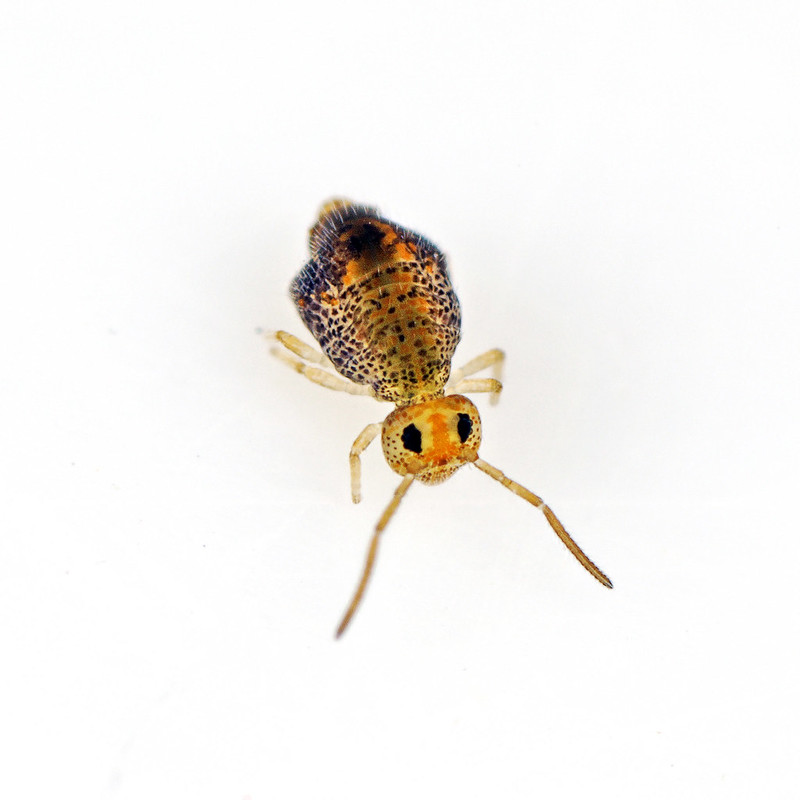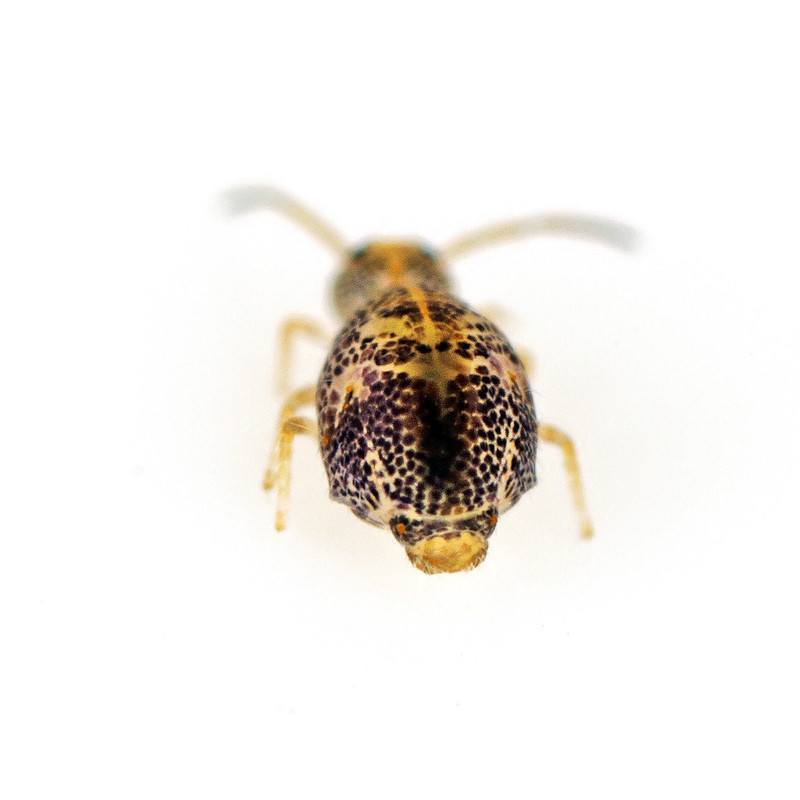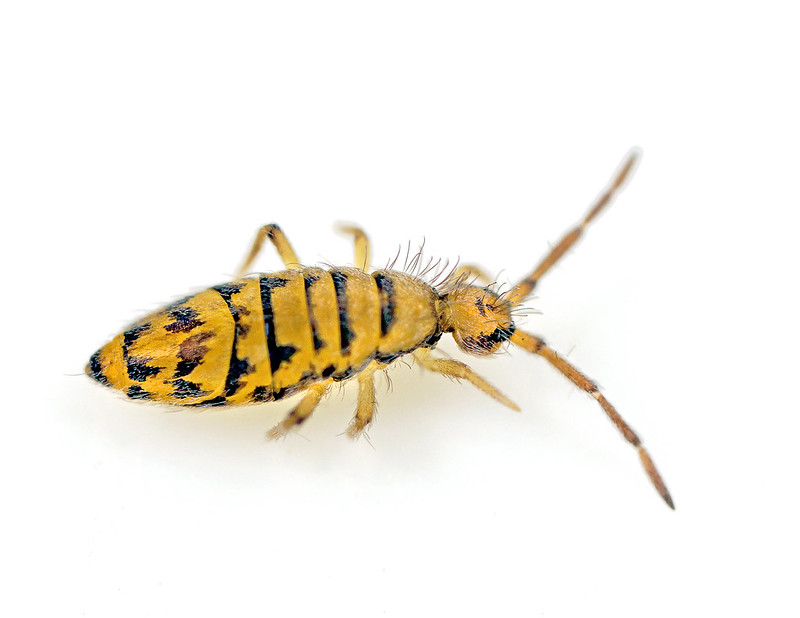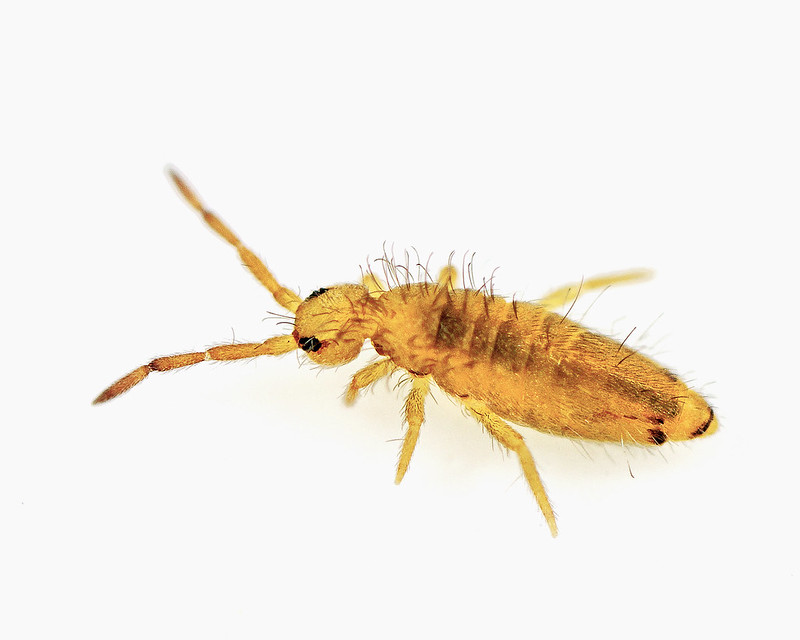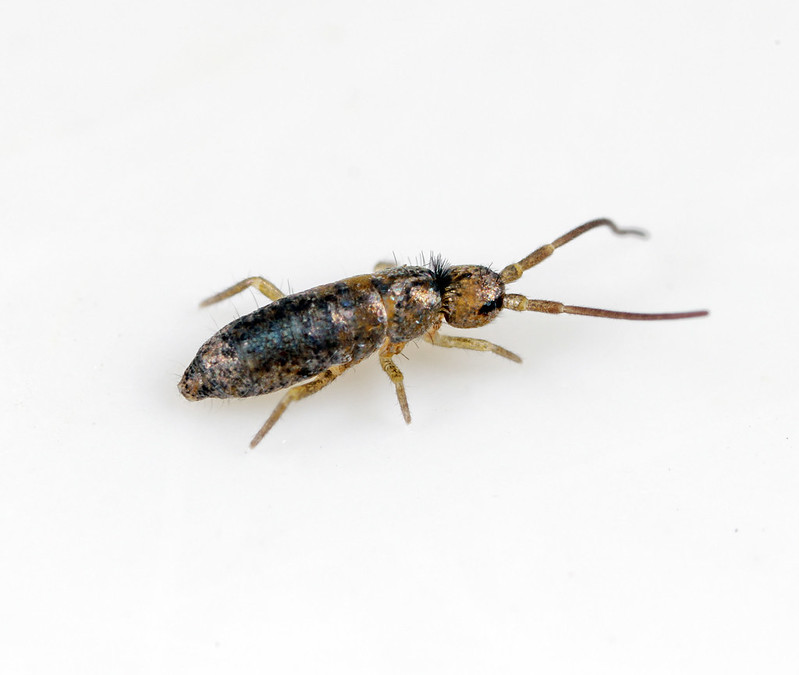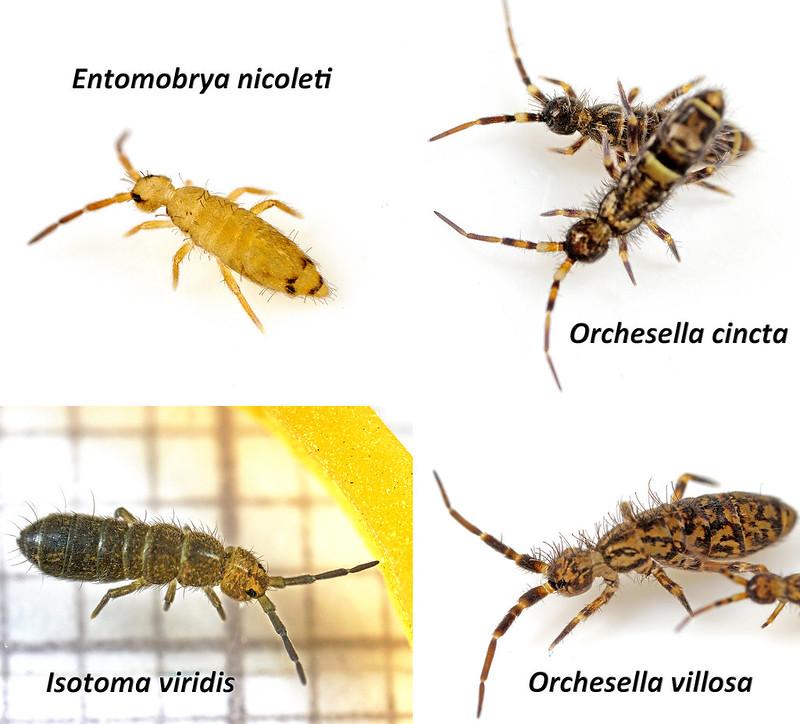
A few years ago when I was pretending to be a mycologist I became aware that the community was using PlaqSearch (Google it: stated ingredients: Fd and C Blue No 1, D and C Red No 28, Dextrates, Magnesium Sterate, Sodium Starch Glycolate) for differential staining of fungi. This is designed to show if you have dental plaque so it is safe to use as it is intended for oral use. In fungi, some tissues stain blue and others pink. I still have a bottle of this kicking around in my microscope kit and every time I make slides I think "I should try it on springtails". And so I did.
My first attempt was on Isotoma viridis preserved in 70% alcohol - a 5 minute stain, destain in water and mount. The results were underwhelming, just a few random pink patches resulting from inefficient destaining I think. In retrospect, since PlaqSearch is water-based this was predictable because of the hydrophobic nature of the Collembolan cuticle:

I had another go, this time with a cleared specimen:
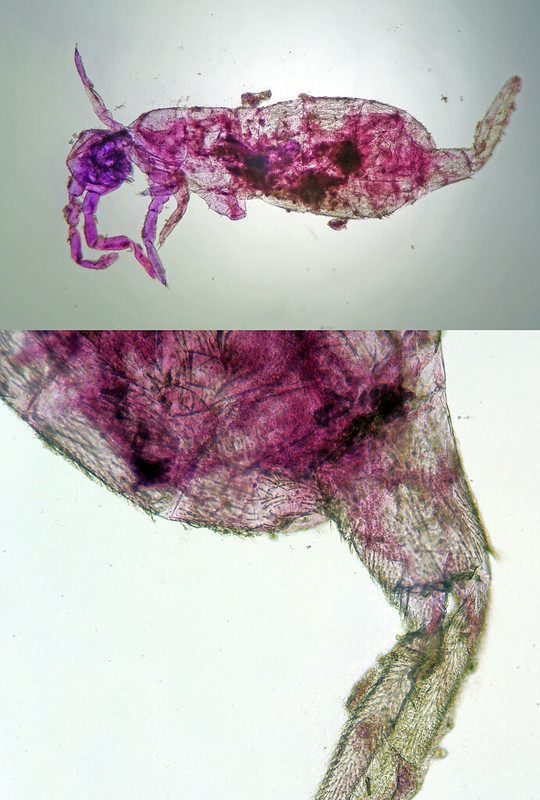
Nothing really of interest, so I conclude that PlaqSearch doesn't offer anything of interest to the Collembologist (if that's a word).
